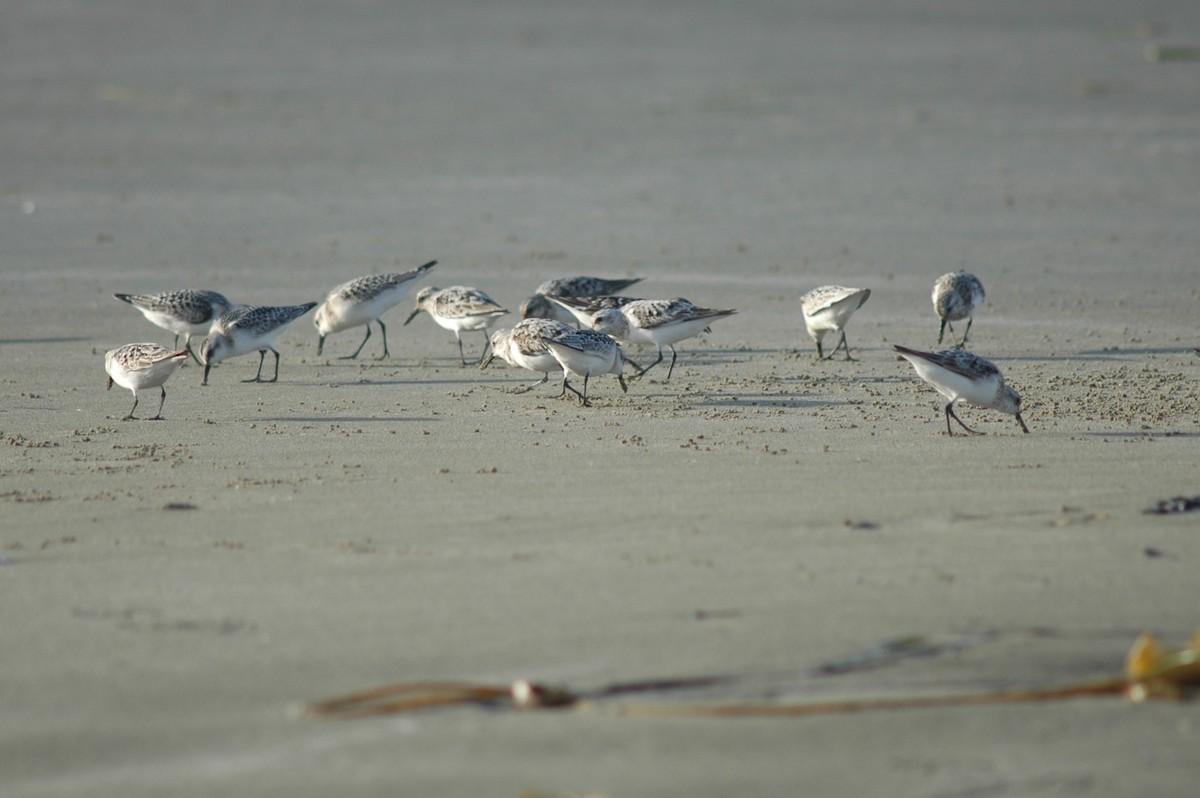
Sandpipers are among the migratory shorebirds protected by a seasonal dog ban in Pacific Rim National Park Reserve/Parks Canada
Preliminary data shows that a seasonal dog ban that launched Apr. 14 on Combers Beach at Pacific Rim National Park Reserve is working to protect migrating shorebirds.
Yuri Zharikov, monitoring ecologist for the Vancouver Island park reserve, reports that bird numbers were up 32 per cent over 2021 at Combers Beach but lower across most monitored beaches including Wick, Long and Schooner Cove.
“This data suggests lower disturbance which has resulted in more time to feed,” Parks Canada said in a news release. Beach visitation has been higher — up to double — except at Combers, which saw a 10 per cent drop, likely from dog walkers.
Ongoing research on other Pacific Rim beaches shows that on-leash compliance is down from 61 per cent in spring 2021 to only 48 per cent this spring.
Off-leash dogs negatively impact wildlife, says Parks Canada, saying the pilot ban at Combers “clearly demonstrates the effectiveness of the dog restriction as management tool” and that “compliance with the law is the best way for dog owners to continue to be able to enjoy the privilege of bringing dogs into the national park reserve.”

Sanderlings are shown on a beach in Pacific Rim National Park Reserve in British Columbia/Parks Canada
Up to 500,000 migratory shorebirds use Pacific Rim’s beaches on an annual basis, making it a shorebird staging area of international importance. Combers Beach as an important habitat for migratory birds and wildlife.
“Migratory shorebirds depend on the national park reserve as a place to rest and forage for food during long trips between the Arctic and areas as far south as South America,” says Parks Canada. “When migratory birds are disturbed, the extra time and energy spent fleeing can affect their survival.”
Until Oct. 1, dogs won’t be permitted on Combers Beach between Sandhill Creek and Green Point Rocks, including Combers Beach Trail and the boardwalk access to Combers Beach from Green Point Campground. Dogs are allowed in all other areas of the Long Beach Unit of Pacific Rim, but must be kept on leash at all times.
Parks Canada staff and law enforcement officers patrol all beaches. Under the Canada National Parks Act, tickets for a dog off leash begin at $58 ($45 USD) for a first offence while repeat offences can lead to court appearances and fines up to $25,000 ($19,500 USD).
If you see a dog in the Combers Beach area, or off-leash anywhere in the national park reserve, Parks Canada asks that you help protect local wildlife by sharing information with fellow visitors or by calling dispatch at 1-250-726-3604 or toll free at 1-877-852-3100.



Add comment